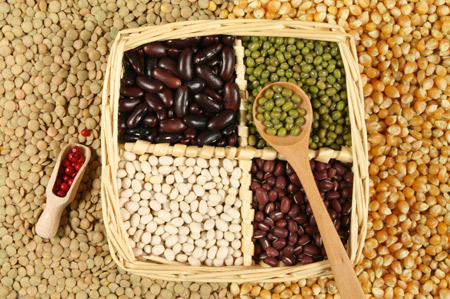 (Agrimoney) – The dollar eased a little further in early deals on Wednesday, but still crop futures struggled to exploit it, in terms of making price gains.
(Agrimoney) – The dollar eased a little further in early deals on Wednesday, but still crop futures struggled to exploit it, in terms of making price gains.
The ideas around at the end of a, more positive, last session that headway would prove difficult to extend were being realised, at least as of 08:30 UK time (02:30 Chicago time), with the improved US row crop-growing weather a depressant on prices.
July is a key month in particular for US corn, bringing the heat-sensitive pollination process.
‘Risk-off tone’
Corn Belt weather forecasts “are supporting a risk-off tone, as temperatures are expected to be above normal but remain unthreatening while additional moisture has been added to the northern and western growing areas”, said Benson Quinn Commodities.
“If confirmed this will be a health mix for the corn crop over the next week.”
CHS Hedging said that “the forecast is for above-normal temperatures for everywhere east of the Rockies which should be beneficial to the crops.
“Excessive temperatures are not foreseen, with the 10-14 day [outlook] returning to normal temperatures.”
Historical comparatives
At RJ O’Brien, Richard Feltes said that the “unfolding of a more stable Midwest weather pattern including the absence of severe heat, the prospects for steady-to-higher crop ratings into early August, when nominal slippage is the norm… suggest further price erosion into early August”.
Factors such as the prospect of increased producer selling, as decent crops become more of a likelihood than a hope, will also contribute to price pressure.
And strong, if not record, yields, are looking more likely than they were during last month’s inundations.
Commodity Weather Group said years when the Corn Belt “had the most similar recent condition ratings saw final corn yields range from 0-9% above trend.
“Soybean yields were 4-6% above trend in analogues that saw steadier ratings for the rest of the season and 4% below trend to 2% above trend in the years that declined in the balance of the year.”
Futures ease
CHS Hedging reckoned that a yield downgrade, from current levels being expected by the US Department of Agriculture, was still in the offing.
“With the current crop conditions, many of the models are estimating a yield around 163 bushels per acre,” below the USDA’s estimate of 166.8 bushels per acre, the broker said.
Nonetheless, corn for September fell by 0.4% to $4.05 a bushel, while the best-traded new crop December lot shed 0.4% to $4.15 ¾ a bushel.
‘Setting up for sideways trade’
Soybean futures in fact did better, adding 0.2% to $10.20 ½ a bushel for August, and 0.1% to $10.06 a bushel for the best-traded November contract.
In part, that is because August is more of key month for the US crop, in weather terms, bringing the sensitive pod-setting phase, while chart factors are broadly more supportive too, with contracts faring better at finding support from moving average lines.
“We may be setting up for sideways trade as market considers August weather, yield and acres,” Benson Quinn Commodities said.
Canola downgrade
But the oilseeds market also received support from a downgrade by Canada to its official forecast for its canola crop, with the estimate cut by 625,000 tonnes to 14.3m tonnes, thanks to a yield downgrade.
“Growing conditions are extremely challenging across the western half of the Prairies, as the weather remains hot and dry,” the AAFC farm ministry said.
Canola futures themselves gained 0.5% to Can$522.50 a tonne in Winnipeg for November delivery.
That said, elsewhere in the oilseeds complex, palm oil for October eased 0.4% to 2,209 ringgit a tonne in Kuala Lumpur, with investors cautious about whether a theme might have played out of likely soft production of the vegetable oil in Malaysia this month.
Ministry vs tour
AAFC cut its forecast for the domestic wheat crop too, by 2.6m tonnes to 27.1m tonnes.
However, this was well within the range of market expectations for the mainly-spring-wheat crop after the Prairies heat.
Besides, the market is taking cues largely too from a CWB wheat tour of the Prairies.
“CWB’s tour of western Canada through the end of this week should confirm the concerns related to that crop as they move west,” said Brian Henry at Benson Quinn Commodities.
“However, there wasn’t anything wrong with the wheat in the pictures I saw from that tour on Tuesday.”
‘Not competitively priced’
In fact, Minneapolis spring wheat futures for September dropped by 0.6% to $5.53 ¼ a bushel, falling a little more precipitously than Chicago soft red winter wheat, which lost 0.5% to $5.22 a bushel for September.
US wheat prices overall remained under something of a cloud after results on Tuesday of an Egyptian tender highlighted their lack of competitiveness compared with Russian supplies, of which Egypt’s Gasc bought 175,000 tonnes.
“Not only was US wheat not competitively priced, but neither was French or other origins” compared with Russian wheat, CHS Hedging said.
Mr Henry said: “The Gasc purchase, while not unexpected, points to the steep premium US soft wheat is being offered at.”




